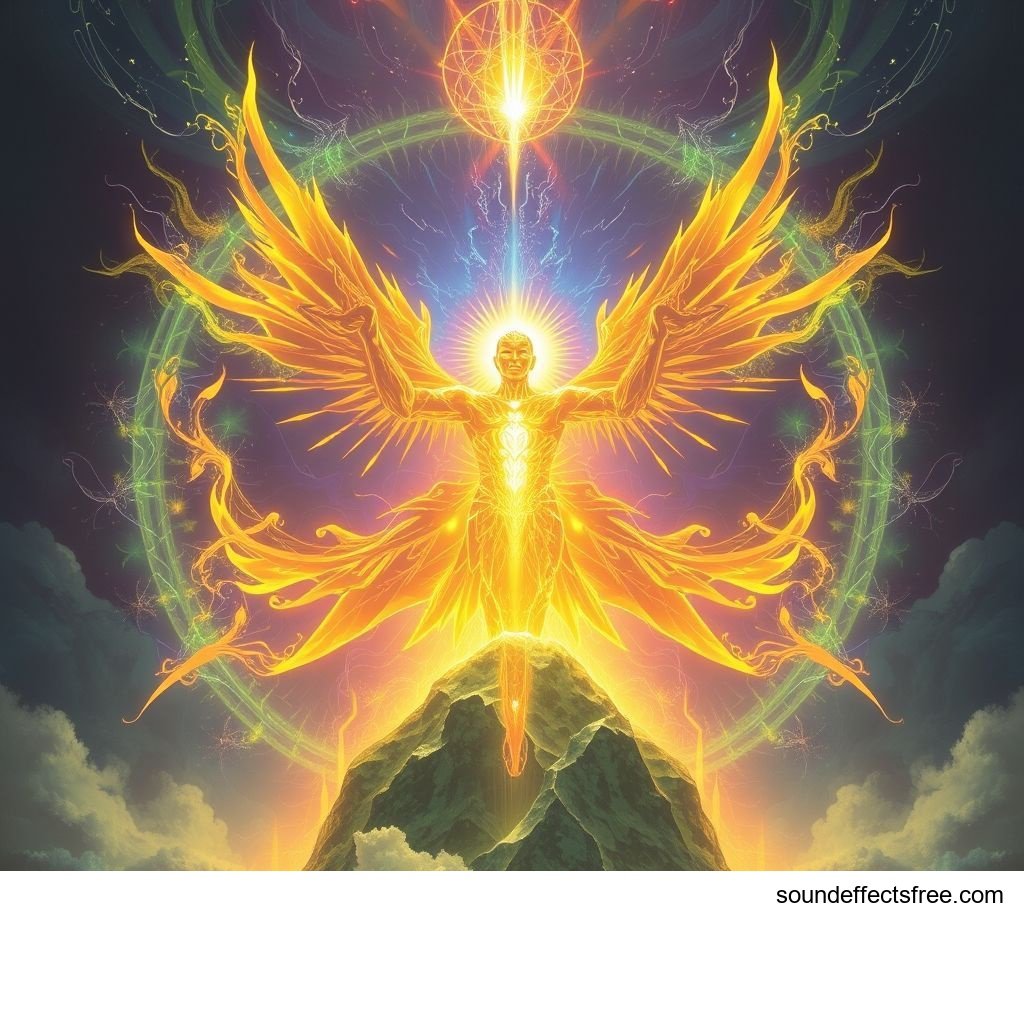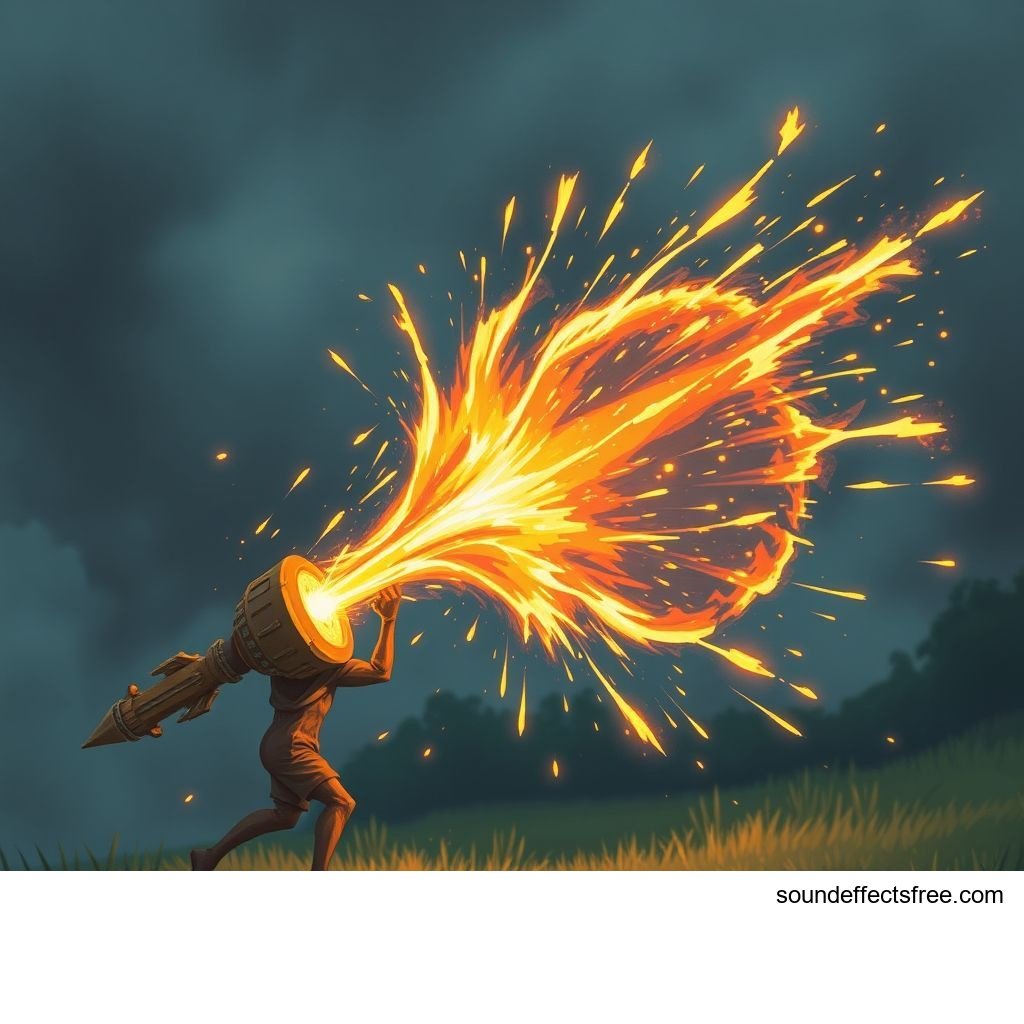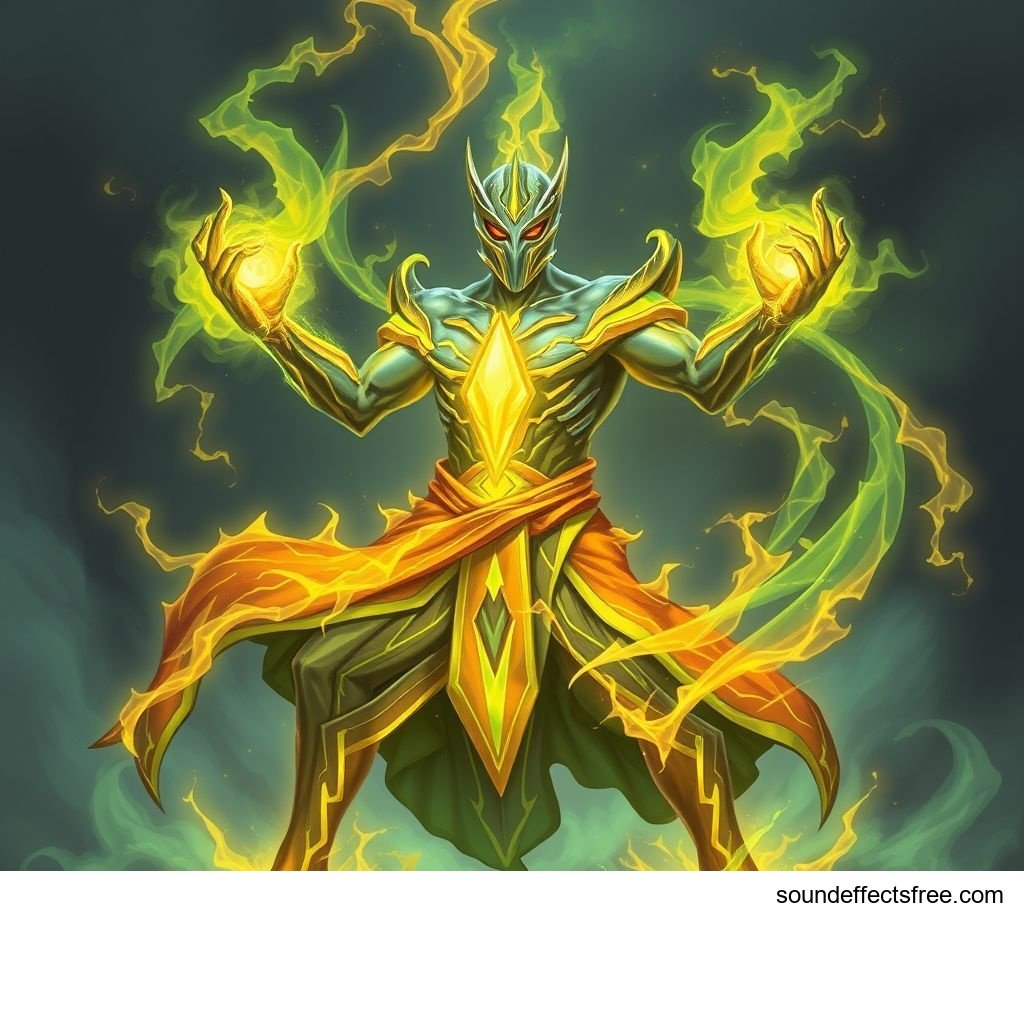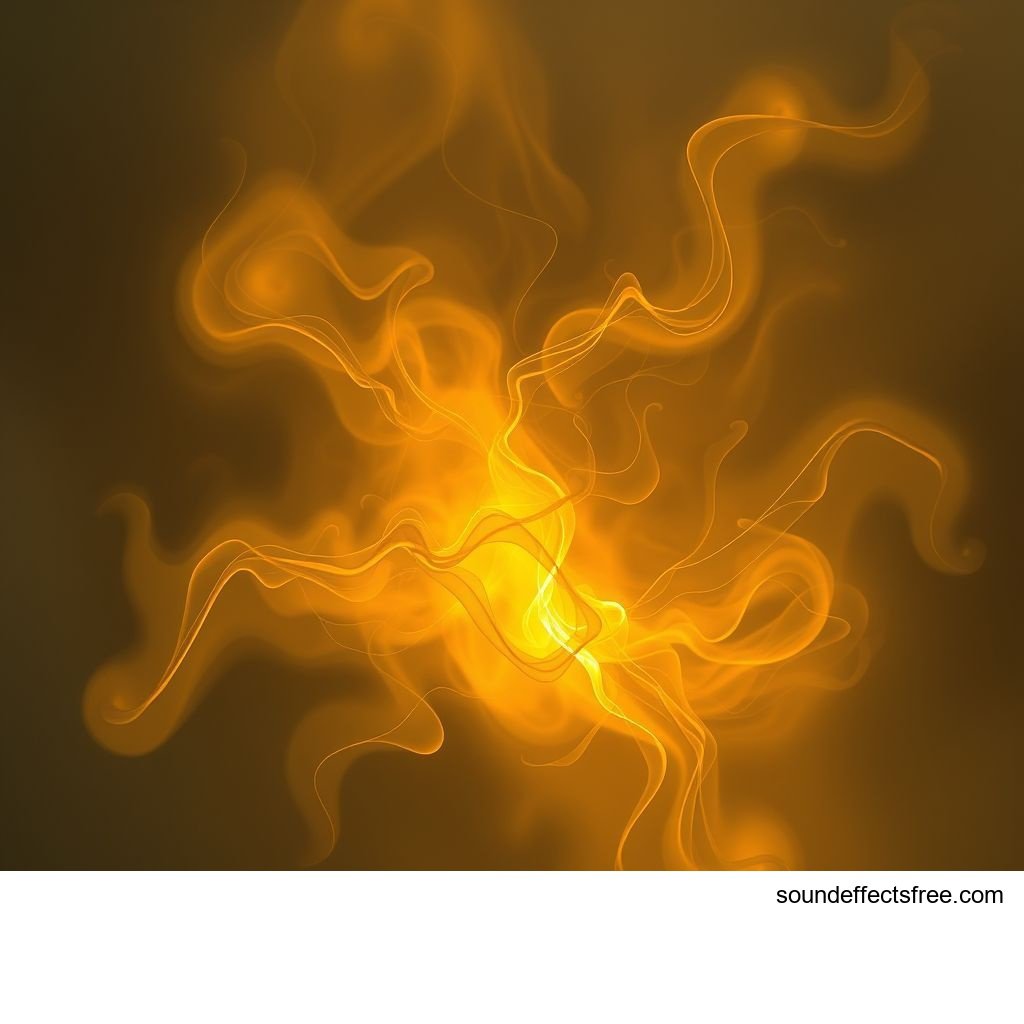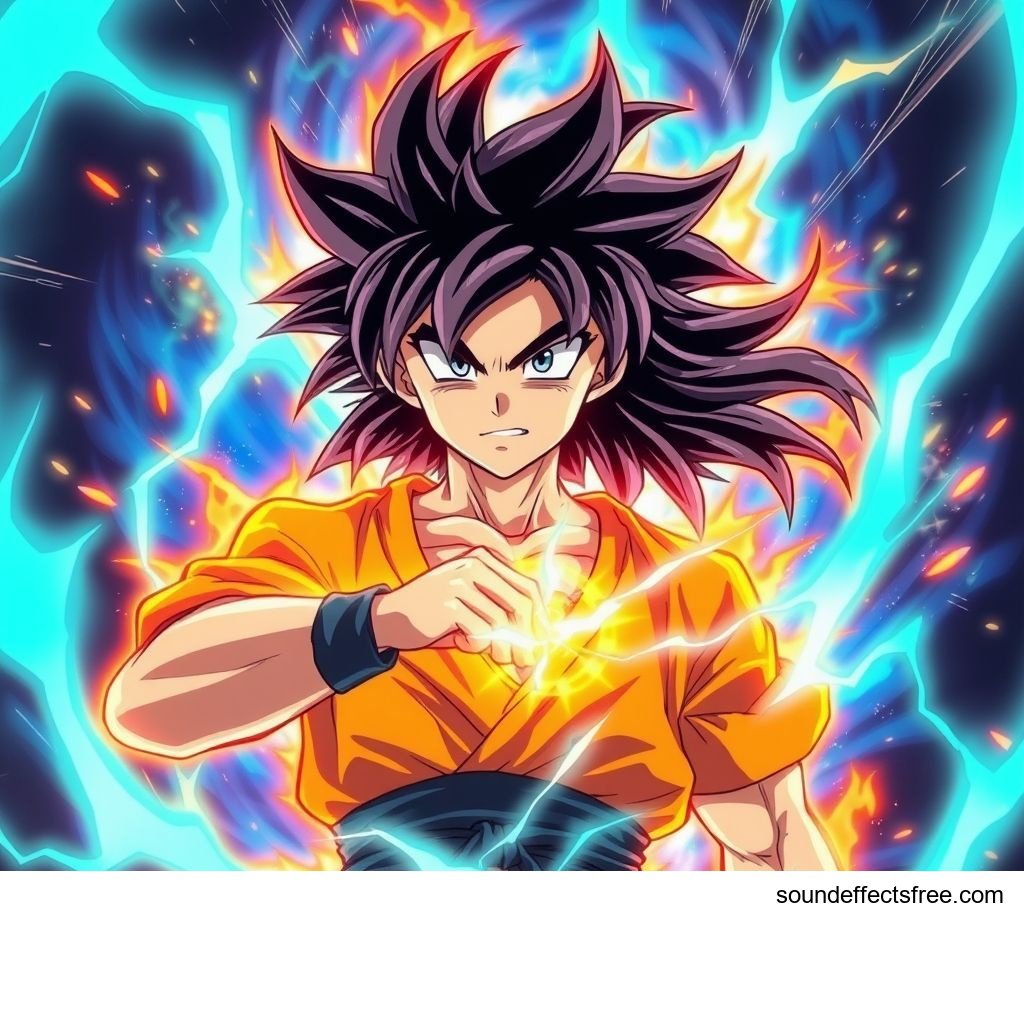Aura Charge: Ascending Power
The right sound elevates any experience. Imagine a character powering up. A dynamic aura sound effect transforms this moment. It adds immense impact. This article explores how to craft and use compelling aura sounds. These sounds amplify character power-ups. They create truly memorable game or film sequences.
Applications in Media
Sound design is crucial. A strong aura sound signifies strength. It tells a story. Visuals are important, but audio completes the picture.
Industry-Specific Uses
Video games benefit greatly from powerful aura sounds. When a character activates a special ability, players need to feel the shift. A distinct aura effect signals this change. It communicates an incoming power spike. Think of fighting games. A character's aura might glow. The accompanying sound makes it palpable. Role-playing games use aura effects for magical spells. Or for divine blessings. Film and animation also use these sounds. They enhance superhero transformations. Or they show mystical energy charge-ups. The sound of an aura can define a character.
Creative Techniques
Designing an effective aura sound requires creativity. Consider the character's personality. Is their aura gentle or aggressive? Does their aura feel mystical or technological? Use different textures. A metallic sheen for a robotic aura. A soft hum for a healing aura. The sound should match the visual. It must also match the character's actions. A quick aura burst for a dash ability. A sustained aura hum for a permanent buff. These choices enhance player immersion.
Technical Analysis
Understanding sound properties helps create better aura effects. Sound waves have distinct characteristics. Knowing these helps sculpt the perfect aura.
Waveform Characteristics
An aura sound often starts subtly. It then builds. This means its waveform typically shows a rising amplitude. A soft attack transitions into a stronger body. The sustain phase can be long or short. It depends on the duration of the power-up. A slow charge will have a gradual waveform increase. A sudden power surge shows a sharp rise. The release phase then fades the aura out. Or it resolves into a new state. This shape defines the sound's envelope. It shapes the perception of energy build-up.
Frequency Profile
The frequency content of an aura is key. Low frequencies add weight. They create a sense of grounded power. Mid-range frequencies provide clarity. They help the aura stand out. High frequencies add sparkle and ethereal qualities. A good aura sound often sweeps across frequencies. It might start low. Then it ascends to higher pitches. This pitch shift creates a feeling of rising energy. It indicates increasing power. Using filters can shape this. Equalization (EQ) helps remove unwanted noise. It also enhances desired frequencies. This makes the aura truly shine.
Dynamics and Pitch
Dynamic range is critical for aura effects. A wide range adds drama. The sound can go from quiet whispers to roaring crescendos. This shows a rapid power build-up. Pitch modulation also enhances an aura. A rising pitch often indicates ascension. A descending pitch might suggest decay or exhaustion. Combining dynamic shifts with pitch changes makes the aura feel alive. It helps tell a stronger story about the character's energy.
Production Tips
Creating high-quality aura sounds requires specific techniques. From initial recording to final mix, every step matters.
Recording & Editing
Source material is vital. Start with clean recordings. You can record environmental sounds. Or use synthesizers. Think about the desired aura texture. Wind chimes, whooshes, or even processed animal sounds can work. Pitch these recordings up or down. Layer multiple samples. Edit them carefully. Remove any clicks or pops. Use noise reduction if needed. Smooth transitions are essential. Ensure the aura begins and ends cleanly. This makes the sound professional.
Software Tools
Digital Audio Workstations (DAWs) are indispensable. Programs like Ableton Live, Logic Pro, or Pro Tools offer robust editing. They provide extensive effects. Synthesizers are excellent for creating unique aura textures. Plugins can add reverb, delay, or distortion. Wavetable synths are great for evolving sounds. Granular synthesis can create shimmering aura textures. Experiment with different tools. Combine them creatively. Learn about spectral processing. This can reveal hidden sonic details within an aura.
Mastering for Impact
Mastering an aura sound prepares it for final use. Ensure consistent loudness. Avoid clipping. Use compression to control dynamics. This keeps the aura audible. Yet it prevents it from overpowering other sounds. Add a touch of stereo width. This makes the aura feel expansive. It can envelop the listener. Finally, export in appropriate formats. High-quality WAV files are often preferred. This ensures maximum fidelity for your aura audio.
Creative Implementation
Beyond raw production, how an aura sound is used makes a difference. Thoughtful placement elevates the overall experience.
Layering Methods
Layering adds complexity. Combine a sustained hum with short bursts. Add sparkling elements to a deep bass tone. One layer provides the core aura sound. Another layer adds movement. A third layer gives it detail. For instance, a low frequency rumble for a weighty aura. A mid-frequency whoosh for its movement. High-frequency chimes for its mystical glow. Each layer contributes to the overall aura identity. This creates a rich, multi-dimensional aura effect.
Spatial Effects
Spatialization makes the aura feel real. Use panning to move the sound. If an aura emanates from a character, it should move with them. Implement reverb to place the aura in a space. A large, open arena needs more reverb. A small, enclosed room needs less. Delays can create echoes. This enhances the sense of energy radiating outwards. A subtle aura might hover. A powerful aura might expand rapidly. These effects enhance immersion. Related aura sounds can be found in various spatial setups.
Rhythmic Integration
Consider the timing of the aura. Does it pulse? Does it swell and recede? Sync the aura sound to visual cues. If a character's energy pulses, the aura should pulse too. This creates a cohesive audiovisual experience. A rhythmic build-up can enhance anticipation. It makes the power feel earned. Even subtle rhythmic elements can add life to a static aura. Explore different tempos. Match the rhythm to the game or film's pace.
Sound Pack Integration
High-quality sound packs offer great starting points. Integrating a pre-designed aura can save time.
Using with Other Sounds
A standalone aura is good. An integrated aura is better. Combine your aura sound with other effects. Perhaps a specific UI sound, like UI Confirm Tap. It could be a character's grunt of effort. Or the clang of metal. Ensure the aura complements these sounds. It should not compete. Mix them carefully. The aura should enhance, not distract. This creates a harmonious audio landscape.
Complete Collection
For comprehensive audio solutions, explore full sound libraries. They offer diverse aura variations. They also provide supporting sound effects. A complete collection means consistent quality. It also saves production time. Many professional sound designers rely on these resources. Check out collections from reputable sources like Pro Sound Effects. Getting the full sound pack allows for consistent aura design across projects. Get the full sound pack for comprehensive audio solutions.
FAQ Section
Q1: What is an aura sound effect? A1: An aura sound effect is an audio sample. It represents a character's radiating energy or power. It often signifies a special state. This could be a charge-up or an active ability.
Q2: How do I make my aura sound powerful? A2: To make an aura powerful, use low frequencies for weight. Incorporate rising pitches for ascension. Add dynamic range. Also use layered textures. This creates a sense of immense energy.
Q3: Can a single aura sound be versatile? A3: Yes, a single aura sound can be versatile. Adjust its pitch, speed, and volume. Layer it with other sounds. These changes create different variations. This makes one aura adaptable.
Q4: What software is best for creating aura sounds? A4: Digital Audio Workstations (DAWs) like Ableton Live, Logic Pro, or FL Studio are excellent. They offer tools for synthesis, editing, and effects processing. Specific synth plugins are also useful for unique aura textures.
Q5: Why is a good aura sound important for games? A5: A good aura sound enhances immersion. It provides crucial feedback. It tells players about character states. It builds anticipation. This makes power moments more impactful. It adds to the overall player experience and engagement.
